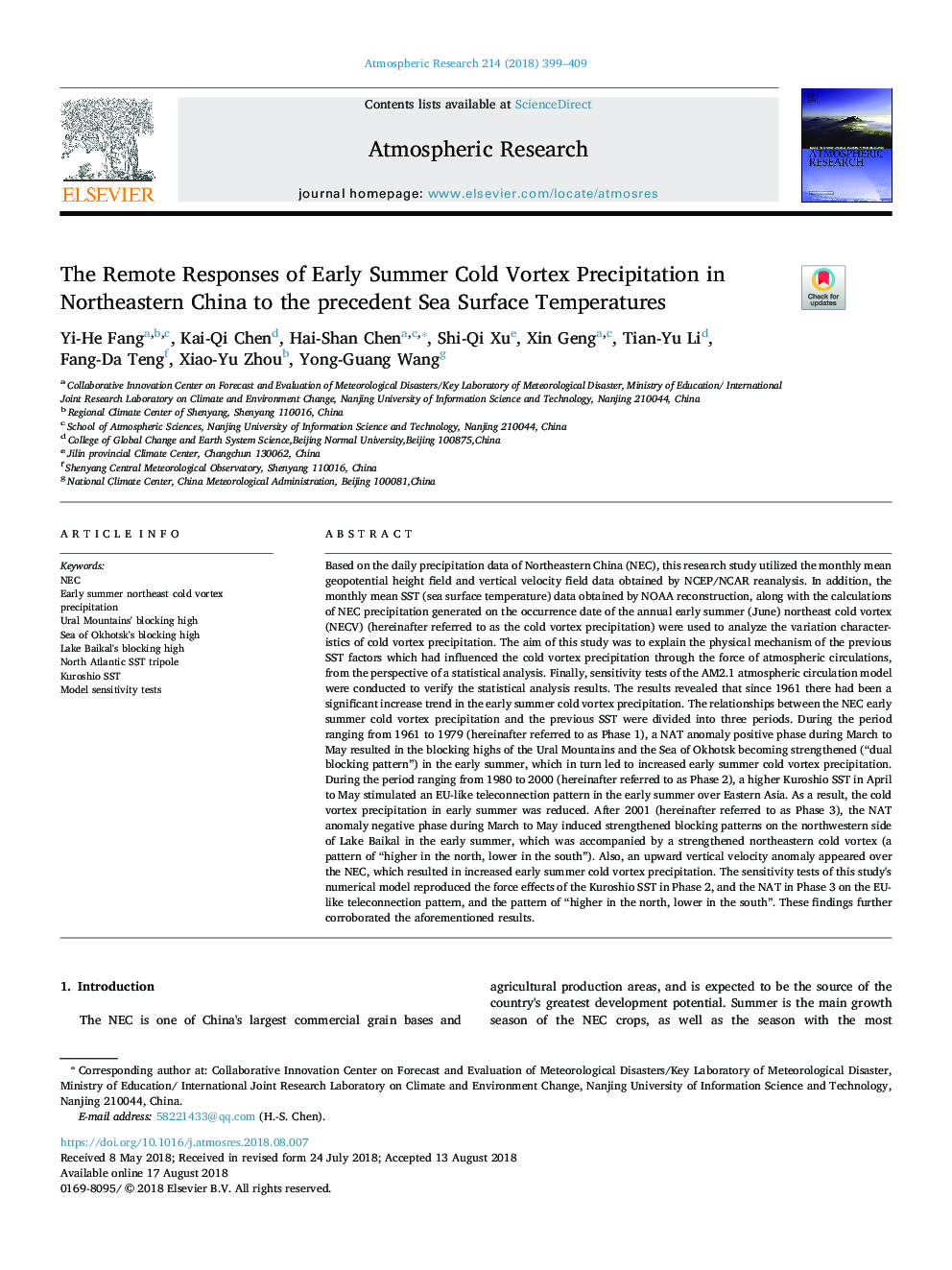| Article ID | Journal | Published Year | Pages | File Type |
|---|---|---|---|---|
| 10113937 | Atmospheric Research | 2018 | 11 Pages |
Abstract
Based on the daily precipitation data of Northeastern China (NEC), this research study utilized the monthly mean geopotential height field and vertical velocity field data obtained by NCEP/NCAR reanalysis. In addition, the monthly mean SST (sea surface temperature) data obtained by NOAA reconstruction, along with the calculations of NEC precipitation generated on the occurrence date of the annual early summer (June) northeast cold vortex (NECV) (hereinafter referred to as the cold vortex precipitation) were used to analyze the variation characteristics of cold vortex precipitation. The aim of this study was to explain the physical mechanism of the previous SST factors which had influenced the cold vortex precipitation through the force of atmospheric circulations, from the perspective of a statistical analysis. Finally, sensitivity tests of the AM2.1 atmospheric circulation model were conducted to verify the statistical analysis results. The results revealed that since 1961 there had been a significant increase trend in the early summer cold vortex precipitation. The relationships between the NEC early summer cold vortex precipitation and the previous SST were divided into three periods. During the period ranging from 1961 to 1979 (hereinafter referred to as Phase 1), a NAT anomaly positive phase during March to May resulted in the blocking highs of the Ural Mountains and the Sea of Okhotsk becoming strengthened (“dual blocking pattern”) in the early summer, which in turn led to increased early summer cold vortex precipitation. During the period ranging from 1980 to 2000 (hereinafter referred to as Phase 2), a higher Kuroshio SST in April to May stimulated an EU-like teleconnection pattern in the early summer over Eastern Asia. As a result, the cold vortex precipitation in early summer was reduced. After 2001 (hereinafter referred to as Phase 3), the NAT anomaly negative phase during March to May induced strengthened blocking patterns on the northwestern side of Lake Baikal in the early summer, which was accompanied by a strengthened northeastern cold vortex (a pattern of “higher in the north, lower in the south”). Also, an upward vertical velocity anomaly appeared over the NEC, which resulted in increased early summer cold vortex precipitation. The sensitivity tests of this study's numerical model reproduced the force effects of the Kuroshio SST in Phase 2, and the NAT in Phase 3 on the EU-like teleconnection pattern, and the pattern of “higher in the north, lower in the south”. These findings further corroborated the aforementioned results.
Keywords
Related Topics
Physical Sciences and Engineering
Earth and Planetary Sciences
Atmospheric Science
Authors
Yi-He Fang, Kai-Qi Chen, Hai-Shan Chen, Shi-Qi Xu, Xin Geng, Tian-Yu Li, Fang-Da Teng, Xiao-Yu Zhou, Yong-Guang Wang,
